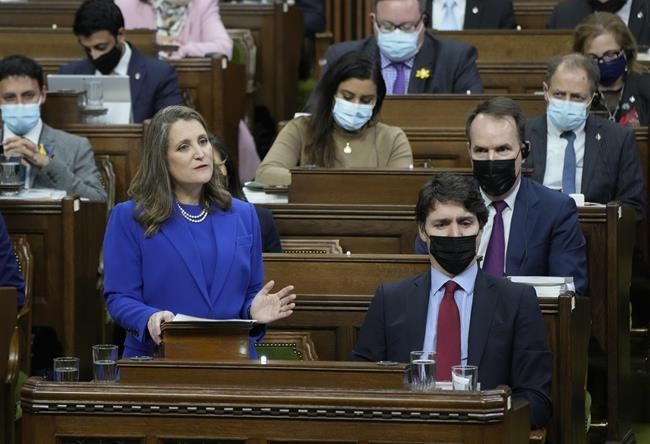OTTAWA — The head of a federal infrastructure agency says a new set of investing orders from the Liberal government should make it simpler to deploy more funding in the coming months.
The recent federal budget added to the Canada Infrastructure Bank's plate by requiring it to now spend public dollars on private sector-led projects like small modular reactors, clean fuel production, and carbon capture and storage.
Ehren Cory, the agency's chief executive, says officials have already had conversations with private sector players in the sectors identified in the budget about derisking some of the work with public funding.
The change in the budget was the latest in a string of tweaks for the agency that the Liberals created in 2017.
The agency's spring outlook notes that investments have jumped over the last fiscal year that ended March 31, with 20 of the 28 projects on the go finalized in the previous 12 months.
Cory says while he expects the pace of projects to stay at a higher clip, uncertainty from supply chains and global inflationary pressures are affecting project work.
"We're in a world where there are real challenges in supply chains and inflationary pressures in things like the construction market," he said.
"But in the areas where we're focused, that is why the private sector and engaging the private sector is so important, not so we can try and off-load a whole bunch of risk on them because that in the long run doesn't work, you know, but so you can share in those risks and create aligned incentives."
The Liberals infused the infrastructure bank with $35 billion in federal financing to pull in two or three times that in private dollars, arguing it would stretch Ottawa's capacity to fund the building of more roads, bridges, energy, water and wastewater systems.
After a rocky start, the Liberals rejigged the agency's mandate in late 2020 to get more of the money out the door faster.
The agency's year-end figures show it has committed $7.2 billion of its money to the 28 projects on its books, pulling in $7.6 billion in funding from private or institutional investors and a further $6.1 billion from public partners.
The money the agency has committed is expected to come back to it in loan repayments, and Cory said repayments have already started. As the money comes back in, he said the money gets recycled into other projects that will stretch the agency's impact — even if not every project hits a three-to-one multiplier.
"You need to take each sector and take its fundamentals into account," he said.
"What we're ending up with … is our money leveraged multiple times over in real infrastructure projects, and since it's a loan, over time, that money will continue to work for Canadians."
The Liberals are hoping to use the infrastructure bank model anew, promising in the April 7 budget to create a similar financing agency to remove the risk for businesses to invest in new technology.
Cory sees a difference between his agency and the one proposed to be financed through $15 billion of existing, not new, federal funds.
Development of technology, the initial commercialization and building of a pilot factory, for instance, all happens upstream from the infrastructure bank, he said. He said his agency is mandated to invest in infrastructure at scale, not to ease innovation risks.
This report by The Canadian Press was first published April 27, 2022.
The Canadian Press


